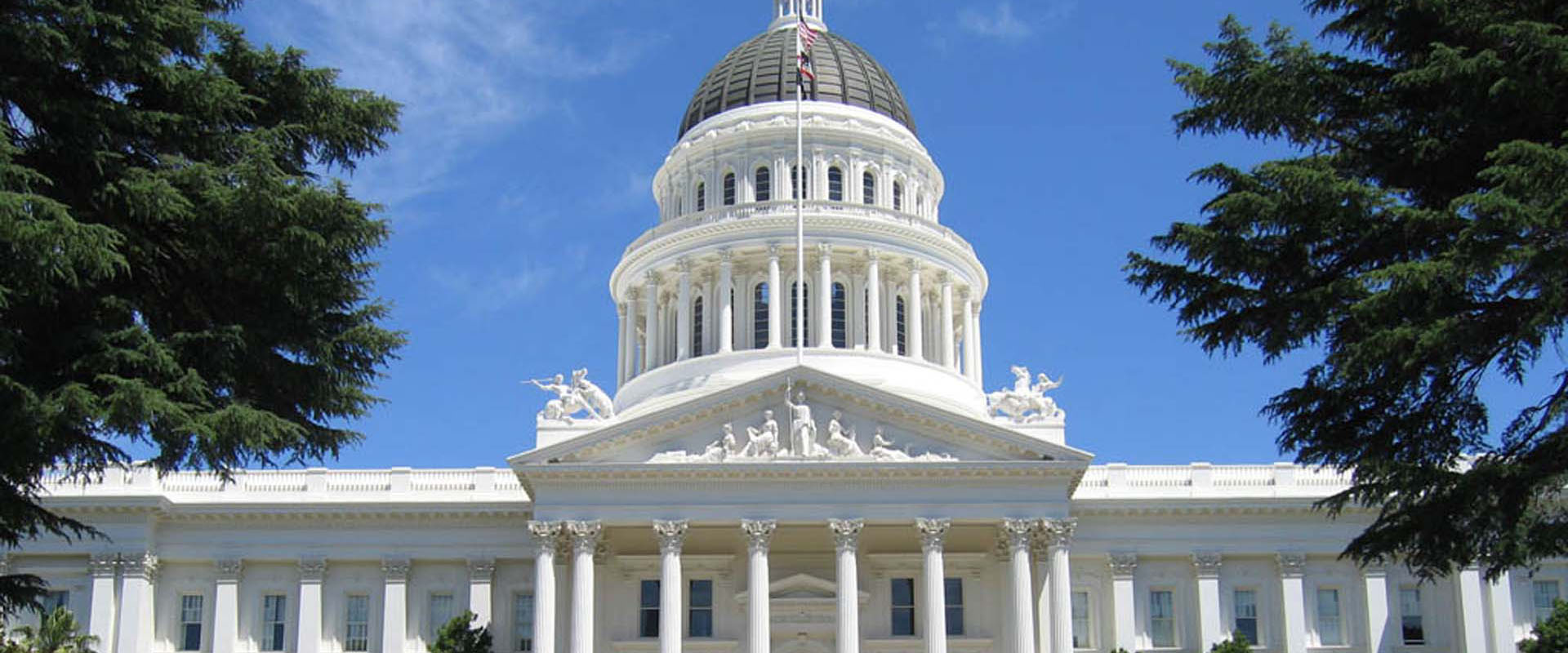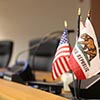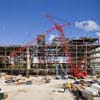SB 1159 and AB 685: Governor Codifies Workers Compensation Presumption and Exposure Notice Requirements Related to COVID-19

October 20, 2020
Number 76
As the pandemic has progressed, employers have been scrambling to keep up with the ever-evolving state and federal guidance and laws concerning COVID-19. On September 17, 2020, Governor Newsom signed into law two more COVID-19 related bills – Senate Bill (SB) 1159 and Assembly Bill (AB) 685. SB 1159 codifies the workers’ compensation rebuttable presumption for employees who contract COVID-19 and, as urgency legislation, took effect immediately upon being signed into law. AB 685 is scheduled to take effect January 1, 2021, and sets forth new reporting requirements related to COVID-19 workplace exposures.
SB 1159
Back in May of 2020, the Governor’s Executive Order N-62-20 created a “rebuttable presumption” for the purpose of workers’ compensation, that employees working outside their home and who contract COVID-19, contracted the virus at work. (See 2020 Client News Brief Number 45.) That Executive Order lapsed on July 5, 2020. The rebuttable presumption has now been codified by SB 1159, retroactive to July 6, 2020. This bill is set to expire January 1, 2023.
The presumption is “disputable” in that an employer may dispute the presumption with evidence that (1) the employer put measures in place to reduce potential transmission of COVID-19 in the employee’s place of employment; and/or (2) evidence of the employee’s non-occupational risks of COVID-19 infection.
Eligibility. The presumption applies to all employees who: (1) test positive during an “outbreak” at the employee’s specific place of employment, and (2) whose employer has five or more employees. For the presumption to apply, the following conditions must be met.
Benefits Available. Benefits available under SB 1159 mirror those provided in the May 6th Executive Order. Qualifying employees are entitled to “full hospital, surgical, medical treatment, disability, indemnity, and death benefits” available under workers’ compensation laws.
SB 1159 requires employees to exhaust any COVID-19 related supplemental paid sick leave benefits, such as Emergency Paid Sick Leave provided under the Families First Coronavirus Response Act, and must also meet certain certification requirements before any temporary disability benefits are available.
Reporting Requirements. Lastly, SB 1159 creates new reporting requirements for employers. Employers are required to report to their claims administrators within three business days of when they know or reasonably should have known that an employee has tested positive for COVID-19. The report must include that an employee tested positive, the date the test was taken, the specific addresses at which the employee worked during the 14-day period prior to taking the test, and the highest number of employees who worked at those addresses during the 45-day period preceding the positive employee’s last day of work at each location.
AB 685
AB 685 allows the state to closely track COVID-19 cases in the workplace by expanding Cal/OSHA’s authority to issue Orders Prohibiting Use (OPU), for workplaces that pose a risk of “imminent hazard” relating to COVID-19 and by prescribing notice requirements in the event of exposure to the virus in the workplace. This legislation also enhances reporting requirements in the event of an “outbreak” in the worksite. This new law will be in effect from January 1, 2021 until January 1, 2023.
Notice to Employees. AB 685 requires employers to provide notice of potential COVID-19 exposures in the workplace within one business day of being informed of a confirmed positive case in the workplace. As explained in Labor Code section 6409.6, in the event of a confirmed case of COVID-19, employers must:
Notice to Local Public Health Agency. Employers must notify the applicable local public health agency within 48 hours when notified of a number of cases that meet the definition of a COVID-19 “outbreak,” as defined by the California Department of Public Health (CDPH). Per AB 685, an outbreak is defined by the CDPH as three or more cases in a 14-day period. (The definition of “outbreak” is not the same as under SB 1159.) The notice must identify the names, number of qualifying individuals, occupation, worksite for those individuals, as well as the employer’s business address and North American Industry Classification System code of the worksite. A qualifying individual is anyone who has a confirmed case of COVID-19 via a positive test or diagnosis by a healthcare provider, has been ordered to isolate by a public health official, or died of COVID-19. Following the reporting of an outbreak, the employer must continue to give notice to the local health department of any subsequent lab-confirmed cases at the worksite.
Cal OSHA. AB 685 fast tracks the timeline for issuing serious citations. Under normal circumstances, Cal/OSHA must first provide a “1BY” notice of intent if the agency decides to classify a citation as “serious.” AB 685 has now eliminated the requirement for Cal/OSHA to provide a 1BY notice for COVID-19 related hazards. Now, Cal/OSHA can issue a citation immediately and employers will no longer be given advanced notice of the “serious” classification and can no longer respond to allegations before the citation is issued.
In addition, AB 685 expands Cal/OSHA’s authority to shut down a workplace, operation, or process if it determines that it creates an “imminent hazard.” Certain criteria must be met before a workplace can be determined to create an imminent hazard.
Takeaways
SB 1159 – Employers must work with their workers’ compensation carrier to quickly and diligently investigate each positive test and obtain any evidence related to how and where an employee might have contracted the virus.
Employers should be vigilant and prepared to respond to any indication that an employee has contracted COVID-19 and should work closely with their workers’ compensation insurance carriers in dealing with such matters.
AB 685 – As this legislation does not become effective until January 1, 2021, employers should spend some time preparing for the new notice and reporting requirements. Existing procedures related to notification of COVID-19 exposures in the workplace should be reviewed and revised to comply with the new requirements imposed by AB 685.
If you have any questions about new COVID-19 protections and requirements imposed by SB 1159 and AB 685 or any other COVID-19 related questions, please contact the authors of this Client News Brief or an attorney at one of our eight offices located statewide. You can also subscribe to our podcast, follow us on Facebook, Twitter and LinkedIn or download our mobile app.
Number 76
As the pandemic has progressed, employers have been scrambling to keep up with the ever-evolving state and federal guidance and laws concerning COVID-19. On September 17, 2020, Governor Newsom signed into law two more COVID-19 related bills – Senate Bill (SB) 1159 and Assembly Bill (AB) 685. SB 1159 codifies the workers’ compensation rebuttable presumption for employees who contract COVID-19 and, as urgency legislation, took effect immediately upon being signed into law. AB 685 is scheduled to take effect January 1, 2021, and sets forth new reporting requirements related to COVID-19 workplace exposures.
SB 1159
Back in May of 2020, the Governor’s Executive Order N-62-20 created a “rebuttable presumption” for the purpose of workers’ compensation, that employees working outside their home and who contract COVID-19, contracted the virus at work. (See 2020 Client News Brief Number 45.) That Executive Order lapsed on July 5, 2020. The rebuttable presumption has now been codified by SB 1159, retroactive to July 6, 2020. This bill is set to expire January 1, 2023.
The presumption is “disputable” in that an employer may dispute the presumption with evidence that (1) the employer put measures in place to reduce potential transmission of COVID-19 in the employee’s place of employment; and/or (2) evidence of the employee’s non-occupational risks of COVID-19 infection.
Eligibility. The presumption applies to all employees who: (1) test positive during an “outbreak” at the employee’s specific place of employment, and (2) whose employer has five or more employees. For the presumption to apply, the following conditions must be met.
- The employee tests positive for COVID-19 within 14 days of performing labor or services at the employee’s place of employment at the employer’s direction.
- The day on which the employee performed the labor or services was on or after July 6, 2020. The date of the injury shall be the last date the employee performed labor or services at the employee’s place of employment at the employer’s direction before the positive test.
- The employee’s positive test occurred during a period of an outbreak at the employee’s specific place of employment.
- If the employer has 100 employees or fewer at a specific place of employment, four or more employees test positive for COVID-19;
- If the employer has more than 100 employees at a specific place of employment, 4% or more of the number of employees who reported to the specific place of employment, test positive for COVID-19; or
- A specific place of employment is ordered to close by a local public health department, the State Department of Health, the Division of Occupational Safety and Health, or a school superintendent due to a risk of infection with COVID-19.
Benefits Available. Benefits available under SB 1159 mirror those provided in the May 6th Executive Order. Qualifying employees are entitled to “full hospital, surgical, medical treatment, disability, indemnity, and death benefits” available under workers’ compensation laws.
SB 1159 requires employees to exhaust any COVID-19 related supplemental paid sick leave benefits, such as Emergency Paid Sick Leave provided under the Families First Coronavirus Response Act, and must also meet certain certification requirements before any temporary disability benefits are available.
Reporting Requirements. Lastly, SB 1159 creates new reporting requirements for employers. Employers are required to report to their claims administrators within three business days of when they know or reasonably should have known that an employee has tested positive for COVID-19. The report must include that an employee tested positive, the date the test was taken, the specific addresses at which the employee worked during the 14-day period prior to taking the test, and the highest number of employees who worked at those addresses during the 45-day period preceding the positive employee’s last day of work at each location.
AB 685
AB 685 allows the state to closely track COVID-19 cases in the workplace by expanding Cal/OSHA’s authority to issue Orders Prohibiting Use (OPU), for workplaces that pose a risk of “imminent hazard” relating to COVID-19 and by prescribing notice requirements in the event of exposure to the virus in the workplace. This legislation also enhances reporting requirements in the event of an “outbreak” in the worksite. This new law will be in effect from January 1, 2021 until January 1, 2023.
Notice to Employees. AB 685 requires employers to provide notice of potential COVID-19 exposures in the workplace within one business day of being informed of a confirmed positive case in the workplace. As explained in Labor Code section 6409.6, in the event of a confirmed case of COVID-19, employers must:
- Provide written notice to all employees, and the employers of all subcontracted employees, who were at the worksite within the infectious period who may have been exposed to COVID-19.
- Provide written notice to the exclusive representative (union), if any.
- Provide written notice to all employees who may have been exposed, and their exclusive representatives, of the COVID-19 related benefits that employees may be entitled to under federal, state, or local laws, such as workers’ compensation and COVID-19 leave, paid sick leave, as well as provide the company’s anti-discrimination and anti-retaliation polices.
- Provide all employees and subcontracted employees and the exclusive representative, notice of the disinfection and safety plan the employer plans to implement and complete per the federal Centers for Disease Control (CDC) guidelines.
Notice to Local Public Health Agency. Employers must notify the applicable local public health agency within 48 hours when notified of a number of cases that meet the definition of a COVID-19 “outbreak,” as defined by the California Department of Public Health (CDPH). Per AB 685, an outbreak is defined by the CDPH as three or more cases in a 14-day period. (The definition of “outbreak” is not the same as under SB 1159.) The notice must identify the names, number of qualifying individuals, occupation, worksite for those individuals, as well as the employer’s business address and North American Industry Classification System code of the worksite. A qualifying individual is anyone who has a confirmed case of COVID-19 via a positive test or diagnosis by a healthcare provider, has been ordered to isolate by a public health official, or died of COVID-19. Following the reporting of an outbreak, the employer must continue to give notice to the local health department of any subsequent lab-confirmed cases at the worksite.
Cal OSHA. AB 685 fast tracks the timeline for issuing serious citations. Under normal circumstances, Cal/OSHA must first provide a “1BY” notice of intent if the agency decides to classify a citation as “serious.” AB 685 has now eliminated the requirement for Cal/OSHA to provide a 1BY notice for COVID-19 related hazards. Now, Cal/OSHA can issue a citation immediately and employers will no longer be given advanced notice of the “serious” classification and can no longer respond to allegations before the citation is issued.
In addition, AB 685 expands Cal/OSHA’s authority to shut down a workplace, operation, or process if it determines that it creates an “imminent hazard.” Certain criteria must be met before a workplace can be determined to create an imminent hazard.
Takeaways
SB 1159 – Employers must work with their workers’ compensation carrier to quickly and diligently investigate each positive test and obtain any evidence related to how and where an employee might have contracted the virus.
Employers should be vigilant and prepared to respond to any indication that an employee has contracted COVID-19 and should work closely with their workers’ compensation insurance carriers in dealing with such matters.
AB 685 – As this legislation does not become effective until January 1, 2021, employers should spend some time preparing for the new notice and reporting requirements. Existing procedures related to notification of COVID-19 exposures in the workplace should be reviewed and revised to comply with the new requirements imposed by AB 685.
If you have any questions about new COVID-19 protections and requirements imposed by SB 1159 and AB 685 or any other COVID-19 related questions, please contact the authors of this Client News Brief or an attorney at one of our eight offices located statewide. You can also subscribe to our podcast, follow us on Facebook, Twitter and LinkedIn or download our mobile app.
As the information contained herein is necessarily general, its application to a particular set of facts and circumstances may vary. For this reason, this News Brief does not constitute legal advice. We recommend that you consult with your counsel prior to acting on the information contained herein.







